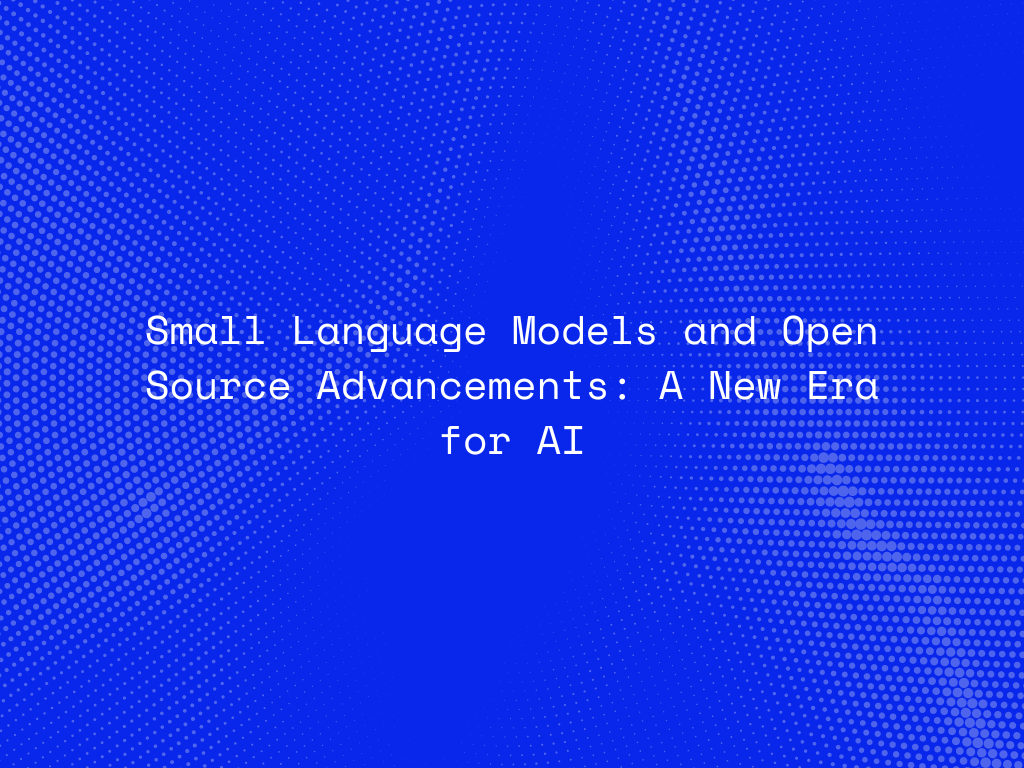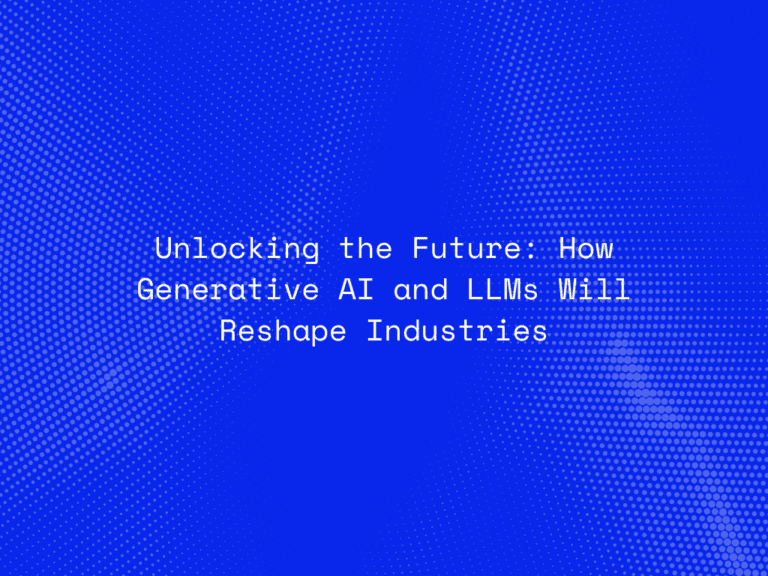Artificial Intelligence (AI) has seen unprecedented growth in recent years, with large language models like GPT-4 and BERT gaining widespread attention. However, as AI capabilities grow, the conversation is shifting toward smaller, more efficient language models and the open-source AI movement. These advancements represent a new era for AI—one that prioritizes accessibility, customization, and efficiency without sacrificing performance.
In this blog, we’ll explore the rise of small language models, the role of open-source AI in driving innovation, and how these trends are reshaping the AI landscape.
The Shift Toward Small Language Models
While large language models like GPT-4 have demonstrated impressive capabilities, they come with significant computational and resource demands. As a result, smaller language models are gaining popularity due to their ability to deliver powerful results while requiring fewer resources.
1. Efficiency and Scalability
Small language models are designed to be more efficient, enabling faster inference times and lower energy consumption. This makes them ideal for real-time applications, such as chatbots, voice assistants, and recommendation engines. Additionally, they can be deployed on edge devices like smartphones and IoT devices, reducing reliance on cloud infrastructure.
2. Lower Costs
Running large-scale language models requires expensive computational resources, making them less accessible to smaller organizations. Small models, on the other hand, can be fine-tuned on smaller datasets, making them more cost-effective for businesses with limited AI budgets. This democratizes access to AI and enables startups and smaller companies to integrate AI capabilities into their products and services.
3. Customization and Adaptability
Small language models can be fine-tuned more easily to suit specific domain-specific tasks. For example, a healthcare provider could fine-tune a smaller model to generate medical reports, or a law firm could customize one for legal document summarization. The adaptability of small models allows businesses to create more specialized AI solutions tailored to their unique needs.
Connect With Us
Key Examples of Small Language Models
Several small language models have gained traction due to their balance between performance and efficiency:
- DistilBERT: A smaller, faster version of the original BERT model, DistilBERT retains 97% of BERT’s accuracy while using only half the number of parameters.
- TinyBERT: Another compressed version of BERT, TinyBERT is designed for low-latency, resource-constrained environments like mobile devices.
- ALBERT: By reducing model size through parameter sharing, ALBERT (A Lite BERT) achieves impressive performance on various NLP tasks while significantly lowering computational costs.
- T5-Small: A smaller version of Google’s T5 (Text-to-Text Transfer Transformer), T5-Small offers high performance on text-generation tasks with a much smaller footprint than its larger counterparts.
The Role of Open-Source in AI Advancements
The open-source movement has become a driving force in AI innovation. Open-source AI tools and frameworks provide developers, researchers, and companies with free access to powerful AI models, encouraging collaboration, experimentation, and innovation. These open-source resources are accelerating the development of AI and ensuring that AI advancements benefit a broader audience.
1. Access to Cutting-Edge Tools
Projects like Hugging Face and OpenAI have democratized access to AI by making models, datasets, and tools publicly available. This has allowed developers and researchers to build upon existing models, improve them, or apply them to new use cases without needing to start from scratch.
For example, Hugging Face’s Transformers library offers an extensive collection of pre-trained language models, enabling users to easily integrate AI capabilities into their applications. The library has a vibrant community of contributors who regularly release updates and enhancements, ensuring that the models remain state-of-the-art.
2. Collaboration and Community-Driven Innovation
The open-source model fosters collaboration across industries, encouraging a community-driven approach to AI development. Researchers from around the world can contribute to projects, improve algorithms, and share knowledge, speeding up the development cycle. Platforms like GitHub host countless AI projects that are continuously refined and expanded by contributors.
Open-source communities are also pushing the boundaries of ethical AI development. Projects like EleutherAI are focused on developing large language models that are freely available and transparent, ensuring that AI remains open and accountable to the public.
3. Transparency and Accountability
Open-source models provide a high level of transparency, enabling users to understand how the models work and identify any biases or issues that may arise. This is particularly important for applications that involve sensitive data, such as healthcare or finance, where trust and accountability are critical.
Transparency also allows the community to detect potential security vulnerabilities or ethical concerns in AI models. As a result, open-source AI development is seen as a way to build trustworthy AI systems that adhere to ethical standards.
Connect With Us
Benefits of Small Language Models and Open-Source AI
The combination of small language models and open-source AI tools offers several key advantages:
- Accessibility: Small models and open-source frameworks make it easier for individuals and organizations of all sizes to access and implement AI technology, fostering a more inclusive AI ecosystem.
- Flexibility: Open-source projects allow developers to customize models for specific use cases, leading to AI solutions that are more tailored to individual needs.
- Cost-Efficiency: Smaller models require less computational power and can be fine-tuned with fewer resources, making AI more affordable for businesses and developers.
- Faster Iteration: With open-source AI tools, developers can quickly iterate on their models, experiment with new techniques, and deploy solutions faster than ever before.
Challenges and Ethical Considerations
While small language models and open-source AI offer many benefits, there are also challenges and ethical considerations to address:
- Bias in Small Models: Just like large models, small language models can inherit biases from their training data. Careful attention must be paid to the data used in model training to ensure fairness and reduce the risk of harmful bias in AI-generated outputs.
- Quality vs. Efficiency Trade-Off: While small models are more efficient, they may not always perform at the same level as their larger counterparts on complex tasks. Developers need to consider the trade-offs between model size, accuracy, and computational efficiency.
- Security Concerns: Open-source projects can sometimes be vulnerable to malicious actors. It’s crucial for organizations to implement proper security measures when using open-source models to prevent the misuse of AI.
- Sustainability: Although smaller models require fewer resources, the growing use of AI across industries still poses sustainability challenges. Energy consumption remains a concern, and ongoing efforts to develop more energy-efficient AI models are needed.
The Future of Small Language Models and Open-Source AI
Looking ahead, small language models and open-source advancements are expected to continue shaping the future of AI:
- Decentralized AI: As AI development becomes more accessible, we may see a shift toward decentralized AI systems, where individuals and organizations build, share, and refine AI models in an open ecosystem.
- Edge AI: Small language models will power more edge computing applications, enabling AI to run directly on devices like smartphones, drones, and sensors without requiring cloud access. This will drive innovation in fields like healthcare, automotive, and smart cities.
- Ethical AI Development: Open-source communities will play a critical role in advancing ethical AI practices, ensuring that AI development is transparent, inclusive, and aligned with societal values.
Conclusion
The rise of small language models and open-source advancements is paving the way for a new era of AI that is more efficient, accessible, and customizable. These trends are democratizing AI, enabling businesses, researchers, and developers to leverage the power of language models without the need for massive resources. As AI continues to evolve, the open-source movement will remain a key driver of innovation, fostering collaboration and ensuring that AI benefits society as a whole.




